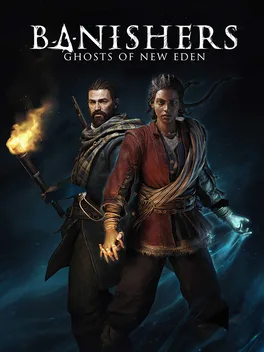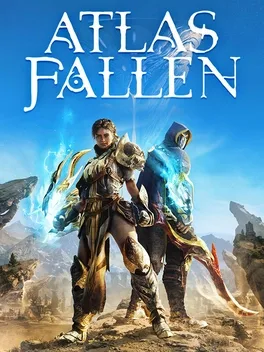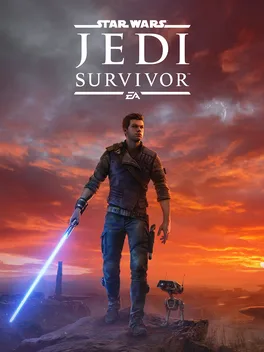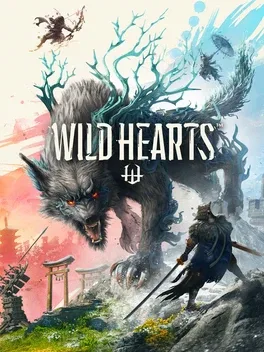Adrian Morales
This author account hasn't been claimed yet. To claim this account, please contact the outlet owner to request access.
Writing For
Latest Reviews
At first glance, it's clear that Banishers is a mix of a few different concepts from across multiple mediums. The game is practically The Exorcist meets The Witcher, set in 1695 and presented in 35mm. Picture Father Kerras meets Geralt of Rivia, and that’s basically who the main character, Red mac Raith, is. In gameplay, Banishers will be familiar to anyone who has played games such as God of War or Hellblade: Senua’s Sacrifice, making it an approachable but occasionally derivative experience. However, as development studio Don’t Nod has proven many times over, the strength of its games comes from the story, and the story of Banishers: Ghosts of New Eden is well worth the investment.
But even with a few technical hiccups, checkpoint woes, and a sense that maybe going this big with such an intimate game wasn’t the best choice, The Invincible is an enjoyable experience. The Invincible is a '60s sci-fi novel brought to life that is best suited for those who love to get nerdy about hard science and love that retro sci-fi aesthetic. More casual fans will likely find plenty to enjoy with the game, but they should know that this a game about getting immersed in a world that wants to tell a story instead of the usual space-faring adventure shtick. When The Invincible gets its hooks in players, it can be a narrative experience that is thrilling, thought-provoking, and worth the ride.
There is plenty to praise when considering that this is Ascendant's debut game and how it ended up being an incredibly competent and entertaining experience that manages to pull off a solid combat system and a fun story. However, there really isn’t much that feels new or particularly interesting otherwise. It is clear that a lot of thought and care has been put into all systems of Immortals of Aveum, from its shooting to its puzzles, but none of it is compelling enough for another playthrough. Immortals of Aveum is well-executed, easy to digest, and remarkably solid, but overall incredibly familiar. Still, it may pleasantly surprise more than one shooter fan, and has enough going for it to likely attract a dedicated audience.
Atlas Fallen had promise, but nothing that this game strives to accomplish ever lands very well or feels fully realized. Between a lackluster story filled with generic and soulless voice acting and a combat system that loses its momentum well before the credits roll, there is rarely a moment where this game feels memorable or worth the time to finish. There is some good stuff on the surface of Deck13’s new IP, with its beautiful vistas and interesting world-building and aesthetic, but digging past the surface of Atlas Fallen shows that it is mostly hollow underneath.
The best way to describe Star Wars Jedi: Survivor is “safe.” Much like with Jedi: Fallen Order, it is clear that Respawn has a lot of good ideas for this franchise and wants to draw from a variety of influences to make something special, but it ultimately ends up making a pastiche of AAA game mechanics and fixings that are serviceable but not very refined. Jedi: Survivor doesn't have the same novelty and luster that Fallen Order had behind it, so when it rests on its laurels like this, the whole package feels underwhelming. When coupled with a clunky story and a laundry list of technical issues, it's clear that Star Wars Jedi: Survivor still has a long way to go before it reaches its full potential.
But in spite of its few shortcomings, Minecraft Legends is still a bold and exciting new direction for a franchise that continues to stand the test of time. It's a game that understands why Minecraft is so compelling in the first place and then twists those elements into an action strategy experience that can be hard to put down. Its only missteps come from its limited scope and how it leaves players wanting more because its core gameplay loop is so good. Minecraft Legends is approachable, captivating, and just a really good time.
It is safe to say, however, that Wild Hearts is a wonderful new IP in the hunting genre that not only stands on the shoulders of Monster Hunter but can also meet it eye-to-eye. It isn’t the most fleshed-out hunting game compared to its progenitor, but it proves that it doesn’t have to be. A razor-sharp focus on combat, player progression, and Kemono hunting is more than enough to make Wild Hearts an excellent palette cleanser for fans that need something new to sink their teeth into. Add in the game’s fun Karakuri crafting system, a flexible and versatile weapon upgrade system, and beast designs that inspire both awe and horror, and Wild Hearts can proudly stand tall as a new pillar in Omega Force’s diverse catalog of games.
There is a satisfying quality to seeing Sonic blitz through rings in a Cyber Space mission while thumping dubstep or crunchy post-hardcore riffs blast throughout the level. Watching Sonic take down a Titan ten times his size in anime-like cutscenes at the end of a boss fight is always a spectacle. There is always something cool and worth the effort to see or do in this game, which is why Sonic Frontiers works well despite being very repetitive in nature. Those who can fall into its groove will find plenty to enjoy in Sonic’s latest adventure, and as a blueprint for the franchise going forward, Sonic could not be in a better place.
Hard West 2 is a solid experience despite some shortcomings and missed opportunities. Ice Code Games crafted a unique and action-packed combat system while retaining much of what makes this type of strategy game so engaging. It may not have the production values or depth of either XCOM or Gears Tactics, but Hard West 2 still manages to be an addicting and satisfactory turn-based strategy experience.
Teenage Mutant Ninja Turtles: Shredder’s Revenge is a fantastic homage to the classic TMNT games that players loved thirty years ago. It doesn’t do anything new with the beat 'em genre and could use an extra game more or two, but that’s ok; the game's core is still incredibly entertaining and is sure to satisfy fans of the Ninja Turtles. Shredder’s Revenge offers deep, fast-paced combat while being widely approachable to new players, and it's all packaged inside a loving tribute to the 1987 cartoon, teeming with personality and admiration for everyone’s favorite heroes in a half-shell.









